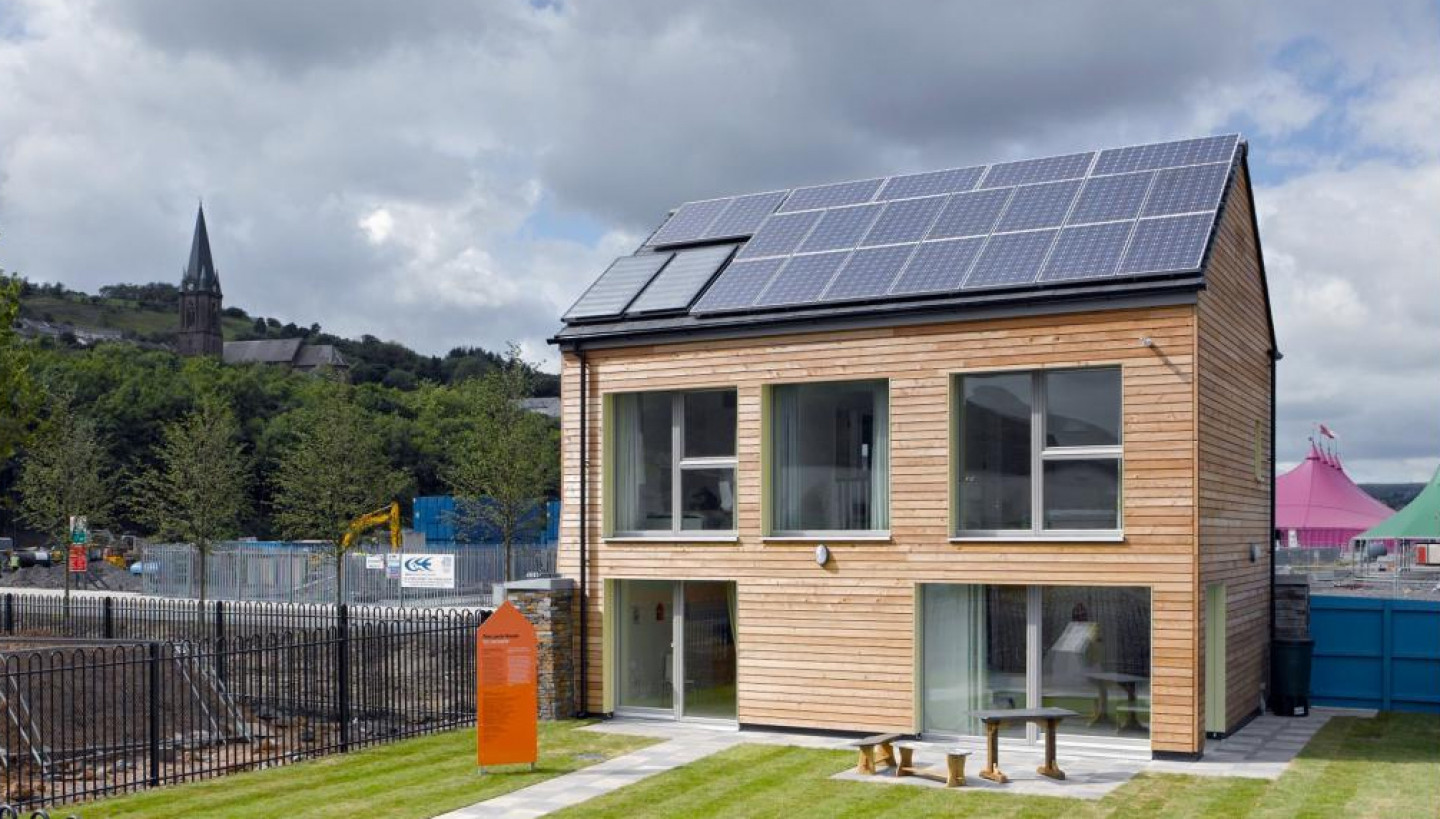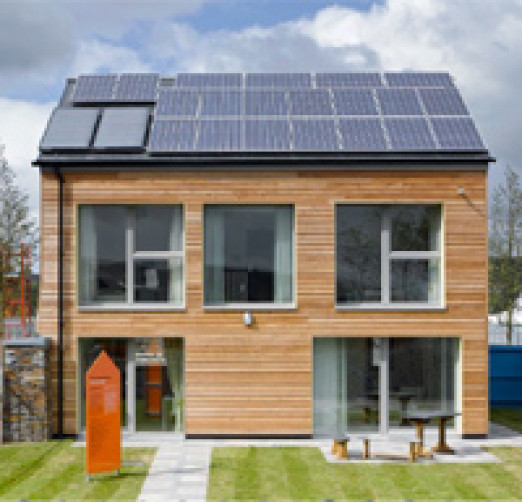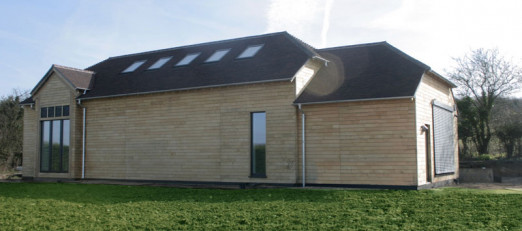As the UK moves towards requiring ‘Zero Carbon Buildings’, understanding the Passivhaus Standard as one reliable route towards delivering ‘Zero Carbon Buildings’ is vital.
Passivhaus is known as the world’s leading building energy efficiency standard. It is also a comfort standard with stringent indoor thermal comfort and ventilation requirements. The majority of industry discussion around passivhaus focuses on the technical details and energy benchmarks required to meet the standard. While this is understandable, as people come to grips with the challenges of delivering buildings to such a high standard, there is less attention paid to the benefits delivered by the standard and wider aspects of the passivhaus design process.
This article sets out “11 Passivhaus Pointers” that will lead people in the right direction whether they just want to understand passivhaus more, or if they are already getting into the process of designing and delivering passivhaus buildings. For people already experienced with passivhaus, the pointers should still serve as useful reminders.
1. Integrated Design
Passivhaus is not a standard that can be complied with by including some key elements or features and ticking the right boxes. Fundamentally it is about the building design and needs to be approached in an integrated manner by the whole design team to be successfully delivered. It is a fabric-first standard where the building delivers very high performance, by design, for the lifetime of the building fabric. It relies less on building services or technology and more on building physics. This approach eliminates the risk of expensive additional technology being bolted onto what is essentially a poorly performing building. It also eliminates the risk of bolt-on green-bling compromising the architecture.
2. Building Type
Passivhaus is suitable for all building types, not just houses as sometimes thought, as it is based on physics. Although the initial research and development of the standard was based on residential buildings, it quickly got adopted for larger scale projects. Now there are certified passivhaus homes, apartment blocks, churches, swimming pools, high-rise offices, schools, university buildings, Magistrates Courts and many more.
3. Location
Passivhaus is possible and suitable anywhere in the world, as it requires verified location-specific climate data to be used in the design process. Although it initially started in Germany and then spread first in northern Europe, there are now certified passivhaus buildings all over Europe and Scandinavia as well as in the US, Canada, Mexico, Indonesia, New Zealand, Japan, China and other places. The design of a passivhaus building responds directly to the local context and to the specific construction systems, materials, methods and details vary depending on where the building is located. A passivhaus building in Jakarta is not designed and constructed the same way as one in Wolverhampton, but they will both achieve the same level of indoor comfort and energy efficiency.
4. Orientation
Passivhaus is not the same as “Passive Solar” design and does not strictly require buildings to be south facing. However, solar heat gain is an important factor in reducing energy consumption and is a calculated part of the design process so orientation is important. Smaller buildings with less occupants (eg a house) tend to benefit more from good solar heat gain, whereas, larger buildings with more occupants and internal equipment (eg a university facility) are less dependent on solar heat gain.
5. Form
Passivhaus does not dictate a particular building shape or form. However, physics makes clear that a more complex form with increased surface area will lose more heat than a simple form with less surface area. (This is why we hug our arms around ourselves when we’re cold, to reduce our heat loss!) And physics also makes clear that the more volume there is inside a building relative to the surface area of the building fabric, the more energy will be needed to keep the internal spaces comfortable. So buildings with complex shapes and forms can achieve the Passivhaus Standard, however, more insulation and costly details will be needed. Buildings with simple forms are more effective in terms of building physics and therefore also more cost effective for passivhaus, and actually for any standard of building!
6. Thermal-bridge free
Passivhaus requires the building envelope to be free of thermal-bridges. This is where a component or material that conducts more heat than the insulation (eg a timber stud, a metal brick tie or a structural beam) interrupts the continuity of the insulation. A thermal bridge results in heat being lost from within the building, reducing energy efficiency, and a cold spot in the building fabric. A cold spot can create uncomfortable draughts inside and can lead to condensation and mould growth. This becomes ever more important as the level of insulation provided increases and why for passivhaus buildings thermal bridges must be eliminated by design.
7. Draught free
Passivhaus requires the building envelope to be airtight so that it is draught-free inside. This does not mean the building is a sealed box, even at the ‘stringent’ passivhaus level of 0.6 air changes per hour this is nothing like as airtight as an aeroplane! And windows and doors can be opened at the occupants’ preference! What it does mean is that there are no uncontrolled air leaks through the walls, floor, roof, windows or doors. Uncontrolled air leaks cause uncomfortable draughts, lose heat, reducing energy efficiency, and allow warm moist internal air into the building fabric. Uncontrolled air leaks, like thermal bridges, increase the risk of condensation and mould growth. Passivhaus draught-free construction eliminates these risks.
8. Triple glazing
Passivhaus does not strictly require triple glazing and there are some double-glazed passivhaus buildings in suitable locations such as Auckland, NZ. However, in the UK, the reality is that to meet the Passivhaus Standard triple glazed windows are needed for our climate. This is both for energy efficiency as a window is much less insulating than a wall and for comfort so that the internal surface of the window isn’t noticeably cold to touch or to be near during winter. Additionally the higher performance glazing means no down-draughts are created by a cold glass surface.

REHAU GENEO® Passivhaus certified window system
9. Plentiful Fresh Air
Mechanical ventilation with heat recovery (MVHR) is required for passivhaus buildings in the UK for winter ventilation and can provide considerable summer benefit also. The MVHR supplies filtered fresh air into the building constantly while it is switched on. (No internal air is recirculated.) It also extracts the stale air from the building and in doing so recovers the heat from the outgoing air to pre-warm the incoming air to a comfortable temperature. This is vital for both energy efficiency and comfort – it eliminates icy-cold damp winter draughts from open windows and the need to use more heating to bring the internal space back up to a comfortable temperature.
An MVHR unit is very simple low energy technology, essentially two fans moving air in and out of the building in separate ducts, and through the heat recovery process an MVHR unit saves more energy than it uses.
Passivhaus buildings still need to be designed for ‘natural ventilation’ though. This is for cooling, primarily in summer and at night, and for when the weather is warm enough that windows can be open all the time and there is no need for the MVHR to be running. However, the MVHR can provide secure filtered noise-free ventilation in summer also. This is where ‘natural ventilation’ can fall short if there is air or noise pollution in the area, or if there is a security risk with leaving a window open.
10. Quality without a performance gap
A certified passivhaus building goes through a rigorous independent checking process for the design and construction. This ensures that the design, construction detailing and energy modeling are all to the required standard of performance. It also ensures that the constructed building matches what was designed. The result of this is that passivhaus buildings perform as well as designed or better for comfort and energy performance. And passivhaus buildings are constructed to a very robust standard providing longevity to the building fabric.
11. Comfort & Satisfaction
As has been touched on throughout this article, passivhaus buildings reliably provide a very high level of occupant comfort and satisfaction. The most frequently heard comment is that once a passivhaus building is experienced, people never want anything less! No draughts, warm all year round, no condensation on windows, no steamed up cold bathrooms, super low energy bills. Staff sickness is reported to have reduced by 13% in one passivhaus office building.
Passivhaus delivers on the promises that we, as building professionals, make to our clients about the performance of buildings we design and construct. This makes for very happy clients.
And it delivers on the promises we should be making to future generations; namely robust radically low energy buildings with inherently low carbon emissions. And this is what we need.
Elrond Burrell
 Elrond Burrell is an Architect, Writer & Speaker with over 15 years experience in designing and delivering excellent buildings. His areas of expertise are Sustainable Design, Passivhaus, Timber construction, and Building Information Modeling (BIM). Elrond is an Associate at Architype and he also writes a personal blog called Passivhaus in Plain English and you can connect with him on Twitter, LinkedIn and Google+.
Elrond Burrell is an Architect, Writer & Speaker with over 15 years experience in designing and delivering excellent buildings. His areas of expertise are Sustainable Design, Passivhaus, Timber construction, and Building Information Modeling (BIM). Elrond is an Associate at Architype and he also writes a personal blog called Passivhaus in Plain English and you can connect with him on Twitter, LinkedIn and Google+.





